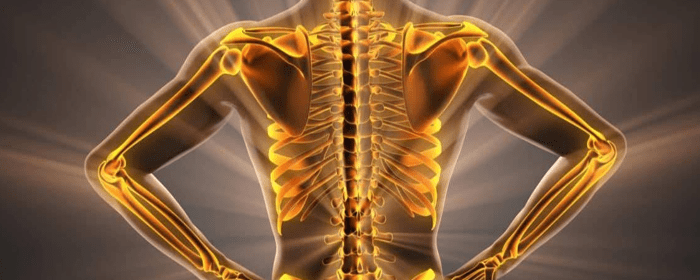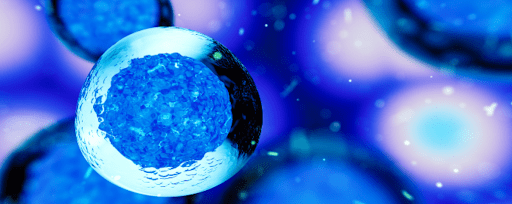
by admin | Mar 24, 2023 | Uncategorized, Health Awareness, Musculoskeletal, Osteoarthritis
Your bones are essential for providing your body with support and stability, especially as you age. When you get older, you are more susceptible to conditions that can weaken bones and make them more prone to breakage.
Keeping your bones healthy throughout your life will strengthen them in old age and make you less likely to develop conditions like osteoporosis. Take a look at these tips for healthier bones.
Increase Calcium Intake
One of the best ways to strengthen your bones is to increase your calcium intake. Many people are deficient in calcium, and it puts them at a higher risk of osteoporosis and other conditions that weaken bones. You can increase your calcium intake by adding more whole milk, yogurt, and calcium supplements to your diet.
Stay Active
You don’t need to perform strenuous exercises or intense workouts. A daily walk, swimming, or even playing golf are all good ways to remain physically active.
People who lead a sedentary lifestyle tend to have weaker bones than those who get regular exercise. To strengthen your bones and reduce the risk of osteoporosis, you should strive to stay active throughout your whole life.
Quit Smoking
Research has suggested that smoking cigarettes can increase your risk of bone breakage or developing osteoporosis. To help yourself maintain strong, healthy bones, it’s better to quit smoking as soon as possible.
Decrease Alcohol Consumption
In addition to tobacco products, alcohol can increase your risk of developing osteoporosis. For stronger, healthier bones, you should try to keep your drinking to a minimum.
Keep Hormones in Check
Some instances of weak bones and osteoporosis are linked to hormone imbalances. Getting your hormone levels regularly checked and ruling out thyroid conditions can help you keep strong bones for your entire life.

by Stemedix | Mar 13, 2023 | Uncategorized
Diabetes is a chronic condition that can progress in severity if left unmanaged. In many cases, untreated diabetes can lead to severe nerve pain. When you suffer from diabetic nerve pain, you may find yourself looking anywhere and everywhere for some relief. Find out how you can address your diabetic nerve pain.
What Causes Diabetic Nerve Pain?
Also known as diabetic neuropathy, diabetic nerve pain is the result of unstable blood sugar levels. When you have diabetes and allow your blood sugar to rise continuously, it can do damage to the nerves that send signals throughout your body.
The blood flow to these nerves is reduced, and they are no longer able to function properly. This leads to nerve pain, most often in the hands, feet, and legs.
Treating Diabetic Nerve Pain
If you develop diabetic neuropathy, there are several treatment options that can alleviate your pain. Learn more about each of these treatments below:
Blood Sugar Maintenance
The best way to stop nerve pain from progressing is by controlling your blood sugar. Practicing proper blood sugar maintenance and keeping your levels in a healthy range will stop the progression of neuropathy and prevent additional nerves from being damaged.
INF
INF, or intraneural facilitation, is another way to treat diabetic nerve pain. INF is an innovative treatment that does not involve any medications and is completely non-invasive. During INF treatment, blood supply is restored to the damaged nerves, alleviating pain and discomfort.
Medication
Sometimes, over-the-counter medication is the best way to relieve diabetic nerve pain. Medications like ibuprofen, acetaminophen, and aspirin can all reduce the severity of your nerve pain when used for short periods. In severe cases, prescription pain medications may be needed to provide comfort.
Physical Therapy
Another way to address diabetic nerve pain is with physical therapy. Certain exercises and stretches can relieve the discomfort caused by neuropathy. These exercises include swimming, walking, and other low-impact exercises.
Regenerative Medicine
Regenerative medicine is a developing field that aims to restore or replace damaged or diseased tissues. Diabetes is a chronic metabolic disorder characterized by high levels of blood sugar (glucose) due to the body’s inability to produce or properly use insulin.
One approach of regenerative medicine is the use of mesenchymal stem cells (MSCs) to replace damaged or dysfunctional cells in the pancreas that produce insulin. These cells can be derived from a patient’s own body (such as bone marrow or adipose tissue) or from umbilical cord tissue (Wharton’s jelly). Although more research is needed to optimize these approaches, several studies have shown promising results in using stem cells to generate new insulin-producing cells in the pancreas.
Diabetic Neuropathy Treatment
Are you struggling with chronic pain and discomfort due to diabetic neuropathy? Diabetic nerve pain can occur when blood sugar levels are not managed properly. To stop the progression of your neuropathy or to prevent nerve pain in the first place, you must keep your blood sugar under control.
Establishing a reliable medical team and having doctors whom you trust can help you manage your diabetes and keep your blood sugar at healthy levels. To learn more, contact a care coordinator today at Stemedix!

by admin | Jan 18, 2023 | Uncategorized
Worldwide, an estimated 10 million people suffer some form of traumatic brain injury (TBI) severe enough to result in either death or hospitalization each year. Nearly 20% of these TBIs occur in the United States and over 50,000 of those affected die as a result of their injury.
Characterized by a wide range of physical, psychological, and emotional impairments that range from mild memory and mood disorders to severe loss of body control and coma, TBIs are most often caused by a serious blow to the head or neck area[1].
Research has confirmed that the initial trauma resulting from the TBI is not the only factor causing damage to the brain. After sustaining an initial injury, the brain initiates a series of complex biochemical responses that significantly influence the overall severity of the damage caused as a result of the injury.
TBIs come with a tremendous cost, with direct and indirect costs estimated at over $60 billion per year in the United States alone. Additionally, there has been limited success in identifying therapeutic or pharmacological treatments that improve the long-term prognosis of moderate to severe TBI.
Considering the recent success of regenerative therapies in the treatment of a number of serious health conditions, researchers are optimistically exploring the potential benefits of using stem cells, specifically mesenchymal stem cells (MSCs), as a possible way to restore functionality to damaged neurons in and around the brain.
In this publication, Hasan et al. review numerous studies investigating the effects of the infusion of MSCs into animal models of TBIs and summarize the advances in the application of MSCs in the treatment of TBI. MSCs are multipotent stromal cells and are available for extraction from all tissue in the body.
Adding to the potential benefits offered by MSCs, they have been found to differentiate into a wide range of cell lines (not just mesenchymal cells) making them an easily accessible and potentially highly effective option for use in the regenerative treatment of TBIs.
In addition, MSCs have been observed selectively migrating and settling within injured tissue, which adds additional benefit for treatment within previously undeliverable or difficult-to-deliver sites such as the brain and the heart.
The growing evidence supporting the efficiency of using MSCs to alleviate the long-term and debilitating effects of TBI has been further bolstered by recent research highlighting the potential for the genetic modification of MSCs as a way to enhance the survival of stem and neuronal cells. Coupled with additional findings in human trials demonstrating that oxidative stress production can be manipulated by MSCs and therefore contribute to the brain’s recovery after injury, researchers are increasingly optimistic that MSC-based approaches offer significant benefits for the treatment of TBIs.
Hasan et al. also point out several concerns and potential challenges of using MSCs in the treatment of TBIs that need to be further explored and better understood before regular use in clinical settings can be approved. Among these concerns, the authors point out, is that a better understanding of the mechanisms of MSC homing in TBI-affected regions of the brain is important in order to employ them efficiently in clinical settings. Another area requiring further research is a better understanding of the respective roles of paracrine effects, transdifferentiated cells, and other factors related to tissue repair. The authors also identify a recent concern over the potential role of MSCs in the development of cancer and autoimmune diseases as a cause for further study of this potential treatment.
Despite the areas identified as in need of further research, the authors conclude that MSCs continues to demonstrate great potential in the field of regenerative medicine and specifically with respect to their use in the treatment of TBI.
Source: Mesenchymal Stem Cells in the Treatment of Traumatic Brain Injury.” 20 Feb. 2017, https://www.ncbi.nlm.nih.gov/pmc/articles/PMC5316525/.
[1] “Traumatic brain injury – Symptoms and causes – Mayo Clinic.” 4 Feb. 2021, https://www.mayoclinic.org/diseases-conditions/traumatic-brain-injury/symptoms-causes/syc-20378557.

by Stemedix | Dec 26, 2022 | Regenerative Medicine, Health Awareness, Uncategorized
There are endless types of medicinal treatments available to treat your health concerns, but one of the more innovative approaches in regenerative medicine. It focuses on using your body’s own materials to stimulate a healing response in your cells, tissues, muscles, and more.
Types of Regenerative Medicine
There are several types of regenerative medicine, but the two most popular treatments are stem cell therapy and PRP injections.
Stem Cell Therapy
Stem cell therapy is a regenerative medicine treatment that uses natural stem cells to produce an intense healing response within the body. When your body’s own stem cells are injected into certain problem areas, they begin to repair damaged cells, nerves, and other tissues. They can also stimulate the growth of new cells and tissues.
PRP Injections
PRP injections are another type of regenerative medicine treatment. PRP refers to “platelet-rich plasma,” which is the portion of your blood that is high in platelets. During PRP therapy, platelet-rich plasma is harvested from your own blood and injected back into specific areas of the body. This can elicit a healing response and new cell growth.
Uses for Regenerative Medicine
Regenerative medicine can be used to treat a variety of concerns, both aesthetic and medical. The following are some of the most common uses for regenerative medicine treatments:
Alzheimer’s Disease
Alzheimer’s is a progressive neurological disease that impacts memory and cognitive skills. It typically occurs in the late 60s and older but can begin at younger ages. Stem cell therapy may be able to treat the symptoms of Alzheimer’s and slow the progression of the disease by directly targeting nerve pathways and repairing damaged brain tissue.
Autoimmune Diseases
Autoimmune diseases like lupus and rheumatoid arthritis can cause chronic pain and impact the way your immune system functions. Regenerative medicine therapy may be a treatment option for certain autoimmune issues, helping stimulate new cell growth and strengthen the immune system.
Signs of Aging
Wrinkles, fine lines, and facial creasing are some of the most common signs of aging. Regenerative medicine, like PRP therapy, can resolve these age-related changes by stimulating new skin cell growth.
Seeking Regenerative Medicine Treatment
You may be a candidate for regenerative medicine treatment if you struggle with anything from chronic pain to hair loss. Many of these treatments are still being researched, and methods are constantly being improved. Speak to your physician about potential regenerative medicine therapy for your concerns.
Contact Us
If you’re interested in learning more about innovative and advanced medical technologies like regenerative medicine treatment, contact Stemedix today to learn more about the treatment options we have to offer!

by Stemedix | Oct 17, 2022 | Uncategorized
Stem cells are unique in the body, as they are the only type of cells that can divide to create a new, specialized cell. For example, a stem cell can divide and make a brain, muscle, or heart cell. Some stem cells can also repair damaged tissue or reduce inflammation.
Many scientists believe stem cells have the power to manage a wide range of conditions. While the capabilities of stem cells are still undergoing research, the therapy remains an alternative treatment.
Patients seeking relief from their conditions are exploring what regenerative medicine, also known as stem cell therapy, may offer but also how much these therapies are. It is important to be sure you are receiving a quality option.
Will Insurance Cover Stem Cell Therapy?
Most insurances will not cover treatments deemed alternative, including stem cell therapy. Fortunately, stem cell clinics often offer financing options for patients paying out of pocket.
What’s Involved in Stem Cell Therapy?
Stem cell therapy uses stem cells to help repair and regrow damaged tissue, such as knee cartilage, from stem cells extracted from your body. Once you’re determined to be eligible for the treatment, harvesting your stem cells is the first step.
Physicians harvest stem cells from the bone marrow in your pelvic bone in a procedure called bone marrow aspiration. They may also extract stem cells from your adipose (fat) tissue.
Lastly, your physician will administer the stem cells into the targeted area. Stem cell therapy results can take a few weeks before you notice an improvement. During that time, your stem cells help repair and regrow damaged tissue.
Stem Cell Therapy Cost
Stem cell therapy in the United States varies depending on the clinic, the location, and the physician performing the procedure. Since the treatment types and requirements vary widely, the cost can, too.
On average, the cost of adult stem cell IV therapy in the U.S. range from $5,000 to $15,000.
While many patients try to avoid the high cost of stem cell IV therapy in the U.S. by traveling internationally for the treatment, once the costs of flights, hotels, and aftercare are factored in, the overall price is often the same. Some regenerative medicine clinics offer options to help with accommodation services while in town.
Stem cell IV therapy holds promise as an innovative treatment approach for various health conditions. While the cost of stem cell IV therapy may seem substantial, it is crucial to consider the factors influencing pricing, such as treatment facility, stem cell source, acquisition and processing methods, treatment protocol, the expertise of the medical team, and additional services provided. Patients considering stem cell IV therapy should consult with reputable clinics, discuss cost structures, and explore financing options to make informed decisions about their healthcare journey.
The cost of stem cell IV therapy may be expensive, but well-informed patients who undergo the treatment often find the benefits prove to be worth their investment, especially in cases where they no longer require ongoing prescriptions and pain medications. To learn more about Stem Cell Therapy contact us today at Stemedix!

by Stemedix | Nov 29, 2021 | Uncategorized
As one of the most common neurological conditions worldwide, multiple sclerosis plays a big part in over two million people’s daily lives. Since it is so prevalent, there is currently a lot of ongoing research into preventing and treating MS. Many people already diagnosed wonder whether there is a diet that can cure or slow the progression of MS.
What Is MS?
Multiple sclerosis (MS) is an autoimmune disease characterized by the degeneration of the myelin sheaths protecting nerve fibers in the brain. However, MS and its progression vary significantly from person to person and affect some people much more than others.
Some people may experience a small, controlled lesion that does not affect cognitive or physical functions. In contrast, others may have multiple lesions across their brain or spine and experience significant cognitive and physical disabilities.
Can the Right Diet Cure MS?
There is not a diet or treatment available that can cure MS. People who claim to know secret eating habits that will cure this chronic condition are promoting non-science-backed products. But luckily, making healthy dietary choices may help lessen your symptoms.
The diet recommended for MS patients is the same that’s recommended for the average adult. A well-balanced diet with lots of fruits, vegetables, whole grains, and little saturated fat is ideal. For people with MS, healthy eating can help overall management of the condition, potentially slow the progression of the disease, and improve quality of life.
What to Avoid
There tends to be a lot of confusion about what lifestyle habits people with MS should avoid. Things MS patients should avoid include the following:
- Smoking
- Drinking
- Skipping meals
- Eating lots of processed foods
- Not exercising regularly
Some recommendations say to avoid dairy, and others say to avoid gluten at all costs if you have MS. Neither of these suggestions is significantly backed by scientific research. People with MS may be lactose intolerant or gluten intolerant. However, if you aren’t, there’s no reason to avoid these products as they have no impact on the progression of MS. One study showed a relation to Vitamin D deficiency and those with MS.
Other Ways You Can Manage Your MS
MS symptoms can become more manageable with the help of medications, lifestyle adjustments, and emerging experimental therapies. One such alternative treatment that may help manage MS symptoms is stem cell therapy. This approach has the ability, through the science of mesenchymal stem cells, to restore damaged myelin sheaths and prevent further progression.
Stem cell therapy has shown promising results in research and will continue to undergo extensive studies in the coming years. Patients may want to explore more to see if it is something that they may have a potential benefit from this alternative therapy. If you are interested in learning more contact a care coordinator today!







 St. Petersburg, Florida
St. Petersburg, Florida
